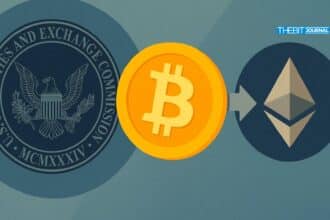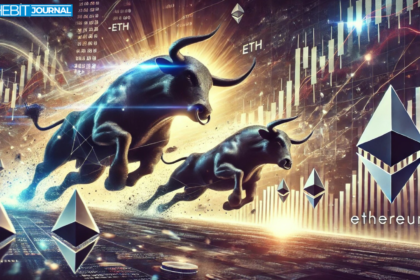Gold and Bitcoin climbed on Tuesday as investors positioned for the Federal Reserve’s upcoming policy decision. Growing geopolitical tensions and renewed U.S. trade measures also pushed demand for traditional and digital safe-haven assets. Meanwhile, market watchers eyed signals from Fed officials on the future direction of interest rates.
Gold Rallies on Safe-Haven Demand and Global Risk
Gold prices advanced as investors reacted to heightened tensions in the Middle East and uncertainty around U.S. trade policy. Spot gold rose 0.7% to $3,357 per ounce, while U.S. gold futures gained 1.3% during the session. The metal found support from risk-averse flows and increasing institutional interest.

Safe-haven demand strengthened after a missile strike near Tel Aviv’s airport, and Israeli retaliation in Yemen escalated regional conflict. Gold also benefited from persistent inflation signals in the U.S., which cast doubt on near-term interest rate cuts. Analysts noted a boost in buying from central banks and Chinese investors returning to physical gold markets.
Investors sought protection as markets weighed the implications of prolonged geopolitical instability and shifting global monetary policies. The dollar remained firm, but gold prices held their ground due to broader concerns. As a result, traders increased positions in bullion while reducing exposure to riskier assets.
Bitcoin Holds Gains Near February Highs
Bitcoin maintained levels reaching recent peaks because market speculation on upcoming Fed rate cuts boosted digital asset markets. Bitcoin established itself at $97,500 while showing minimal movement around the highest points of its trading zone. Market interest in cryptocurrency surged due to growing optimism about Fed rate relief expected during the upcoming months.
The investment flow into Bitcoin ETFS persists because investors expect easier financial rules despite larger-than-expected recent inflation findings. Investors purchased Bitcoin before the Fed’s announcement to seek insight into the bank’s strategic rate decisions. Market participants observed reduced dealer activity that stabilized price levels.

The market suggested that Bitcoin could return to around $100,000 if the Fed indicates more accommodative monetary policies. Crypto trading professionals continue monitoring liquidity patterns and broad market movements, which affect cryptocurrency market value. Bitcoin continues to trade at a level 10% lower than its previous all-time high while maintaining the potential for price movement upward.
Geopolitics and Trade Policy Fuel Market Volatility
The Middle East attacks and resulting counter-offensives created market unpredictability, leading investors to put money into Bitcoin and traditional safe assets such as gold. A combination of Houthi forces’ missile attacks targeting Israel led to Israeli airstrikes against Yemen that intensified political turmoil throughout the region. This conflict disrupted air travel systems while damaging infrastructure, increasing threats of complete regional instability.
U.S. President Donald Trump‘s latest trade proposals introduced new market uncertainties across international trade networks. British pharmaceutical companies expressed alarm after President Donald Trump introduced tariffs on imported drugs, while foreign media companies worried about trade retaliation from key international partners. Following renewed U.S.-China trade negotiations, some market sentiment grew stronger across Asian markets.
Market optimism about global supply chains and trade relationships suffered a brief upswing, but foundational concerns persist at elevated levels. Investors are monitoring the Fed’s decisions to determine how they may impact risk sentiments. Market pressures will rise if the Federal Reserve’s announcement shows hawkish tendencies, but dovish statements could drive additional growth for both gold and Bitcoin.
FAQs
Why are Bitcoin and gold prices rising together?
Bitcoin and gold are rising due to investor demand for alternative assets amid Fed uncertainty and geopolitical instability.
What is the market expecting from the Fed this week?
The market expects the Fed to hold rates steady but is looking for signals on future policy direction from Powell.
How do geopolitical events affect gold prices?
Gold often gains during geopolitical tensions as investors seek safe-haven assets to protect against risk and instability.
What is pushing Bitcoin toward $100,000?
Speculation on future rate cuts, strong ETF flows, and positive sentiment drive Bitcoin toward key resistance levels.
Are central banks still buying gold?
Central banks are increasing gold purchases to diversify reserves and reduce exposure to U.S. dollar assets.
Glossary of Key Terms
Federal Reserve (Fed): The central bank of the United States, responsible for monetary policy and financial system stability.
FOMC (Federal Open Market Committee): The Fed’s policy-setting body that meets to determine interest rates and monetary policy.
Spot Gold: The current market price at which gold can be bought or sold for immediate delivery.
Gold Futures: Contracts to buy or sell gold at a predetermined price at a future date, used for hedging or speculation.
ETF (Exchange-Traded Fund): A type of investment fund traded on stock exchanges, often used to gain exposure to commodities or assets.
Rate Hike/Pause: Central bank actions to either increase or maintain current interest rates, affecting market liquidity and borrowing costs.





























